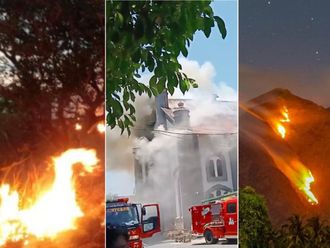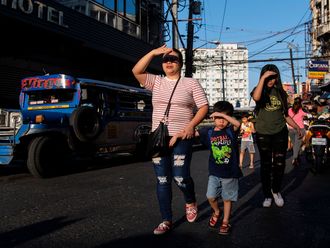Manila: For every peso local tourists shell out, part of it will go to rehabilitating areas destroyed by Typhoon Haiyan’s onslaught in Central Philippines.
This is the new approach being spearheaded by the department of tourism (DoT) to rebuild travel destinations ravaged by Haiyan.
The economies of these damaged areas rely heavily on the service sector, mainly tourism, to survive. Hence, need to revive its travel sector.
International Labour Organisation (ILO) estimates that 2.8 million out of the 5.6 million workers employed in Central Philippines, who have either temporarily or permanently lost their livelihoods, were working as restaurant workers, vendors, motorcycle rickshaw and passenger jeep drivers, among others.
The DOT and its marketing arm, the Tourism Promotions Board (TPB) introduced its, “Bangon Tours” (Revive) project titled “Your Vacation Means a Lot”.
The project is in line with the government’s recovery and rebuilding efforts for the victims and survivors of calamities through the promotion of domestic tourism.
“It is an invitation to travel within the Philippines during the holiday period (December 1 to February 28), visit our fun destinations and participate in rebuilding efforts,” the TPB said.
TPB chief operationg officer, Domingo Ramon Enerio III, said that participating tourist establishments are initially offering special tour packages to 16 tourist destinations nationwide and more destinations will be added.
TPB, however, noted that Bangon Tour offerings will not be limited to these destinations.
“These establishments are being asked to share at least five per cent of their net income from the tour packages / room nights sold via Bangon Tours,” Enerio said in a statement.
“The share will be directly given to the company’s chosen non-government organisation or charitable foundation involved with the disaster-affected communities,” he added.
Enerio extended the invitation to foreign travellers also, as it can contribute to the rebuilding efforts. The storm-hit nation aims to achieve its goal of registering 45 million domestic travellers for 2014.
Locally known as Typhoon Yolanda, the weather disturbance whipped up category 4 hurricanes which triggered tsunami-like storm surges that devastated coastal areas of the islands of Leyte, Samar, Panay, parts of the southern Tagalog region and Palawan. The sheer force of the 225 kilometres winds, flattened the provinces and left at least 5,786 dead and destroyed 1,212,100 houses, completely or partially
Haiyan passed through the Visayas, a group of islands in Central Philippines, where a huge portion of the country’s travel destinations are located.
Among the badly damaged areas were those in Tacloban City in Leyte, Guiuan in Samar, Roxas City and Coron in Palawan.











